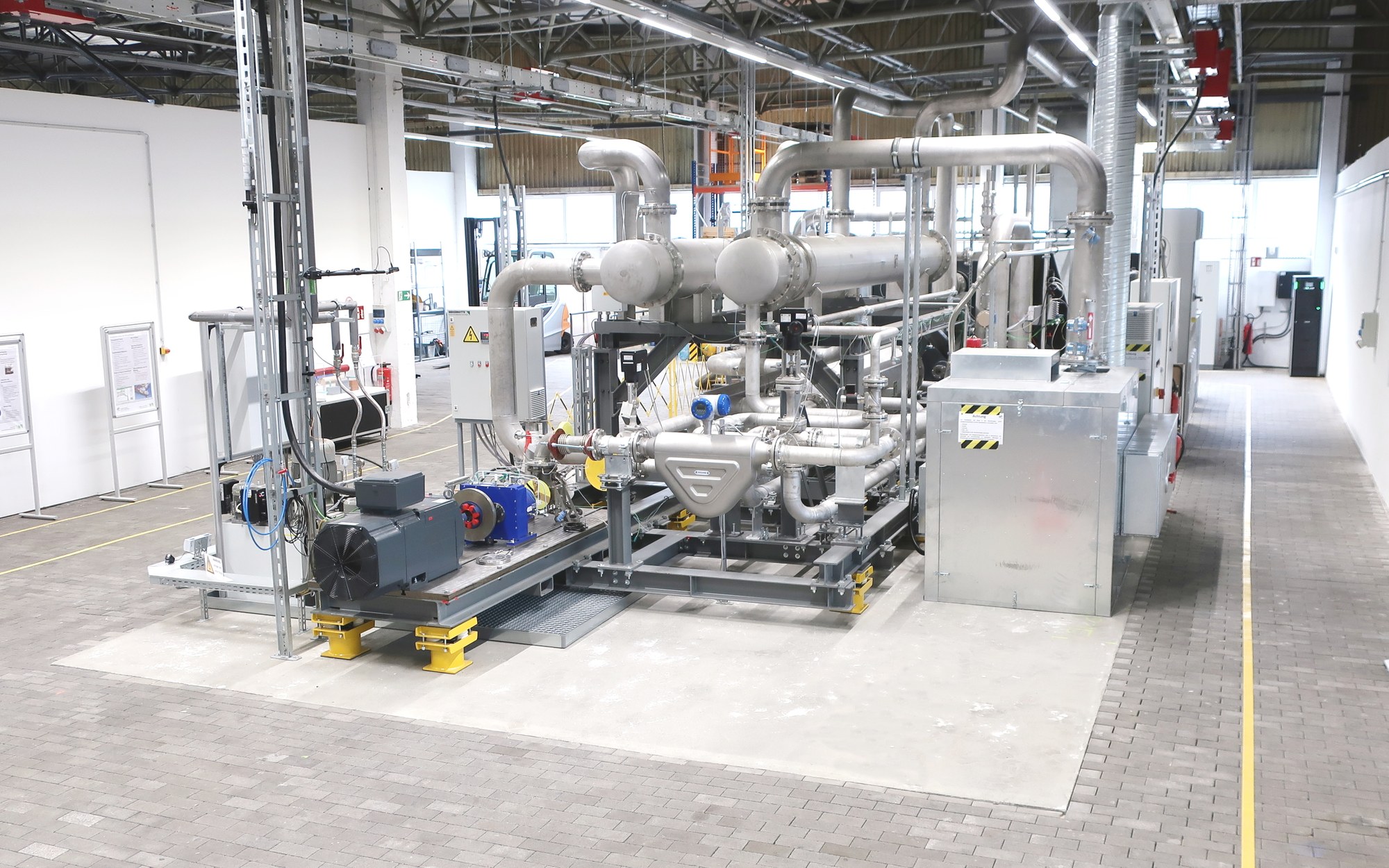High-Temperature Heat Pump Department

Reducing CO2-emissions is an extremely complex task especially in industrial processes. On the one hand, jobs must be preserved. On the other hand, society has a duty to protect the environment, to significantly limit the further use of fossil raw materials, and to ensure the supply of energy. In order to achieve these ambitious goals, solutions are needed that enable the German industry to change from fossil to renewable energies.
Industrial processes are usually operated with material flows at very different temperatures. In the course of this, process heat and cooling energy are provided by technologies, which today almost exclusively rely on fossil fuels. During this decade, the focus has to shift to the sustainable provision of heat.
The Department
In the department of High-Temperature Heat Pump (HTP) we are tackling this challenge by developing an HTP prototype. This HTP will provide both process heat and cooling. Operational as well as thermodynamic findings from the practical test runs are verified and validated using simulation models. The following questions are addressed during the practical test series:
- Which gaseous media are suitable for use in this high-temperature heat pump?
- Concerning process heat and cooling, which temperatures can be achieved or can be provided permanently, depending on the type of gas used?
- Which volume/mass flows of heat or cooling energy can be realized?
- What contribution to heat supplies can the use of renewable electrical energy (from wind, biomass, photovoltaics) make, by using high-temperature heat pumps?
- How is it possible to scale up the prototype of the HTP to adapt and use this technology in various industries?
- What possibilities does the HTP offer to react to the fluctuating energy supply from renewable energies?
These questions are the technical and scientific challenges of the department to accompany established industries on their way to energy transition and to offer suitable low-CO2 key technologies for process heat and cooling in the future.

